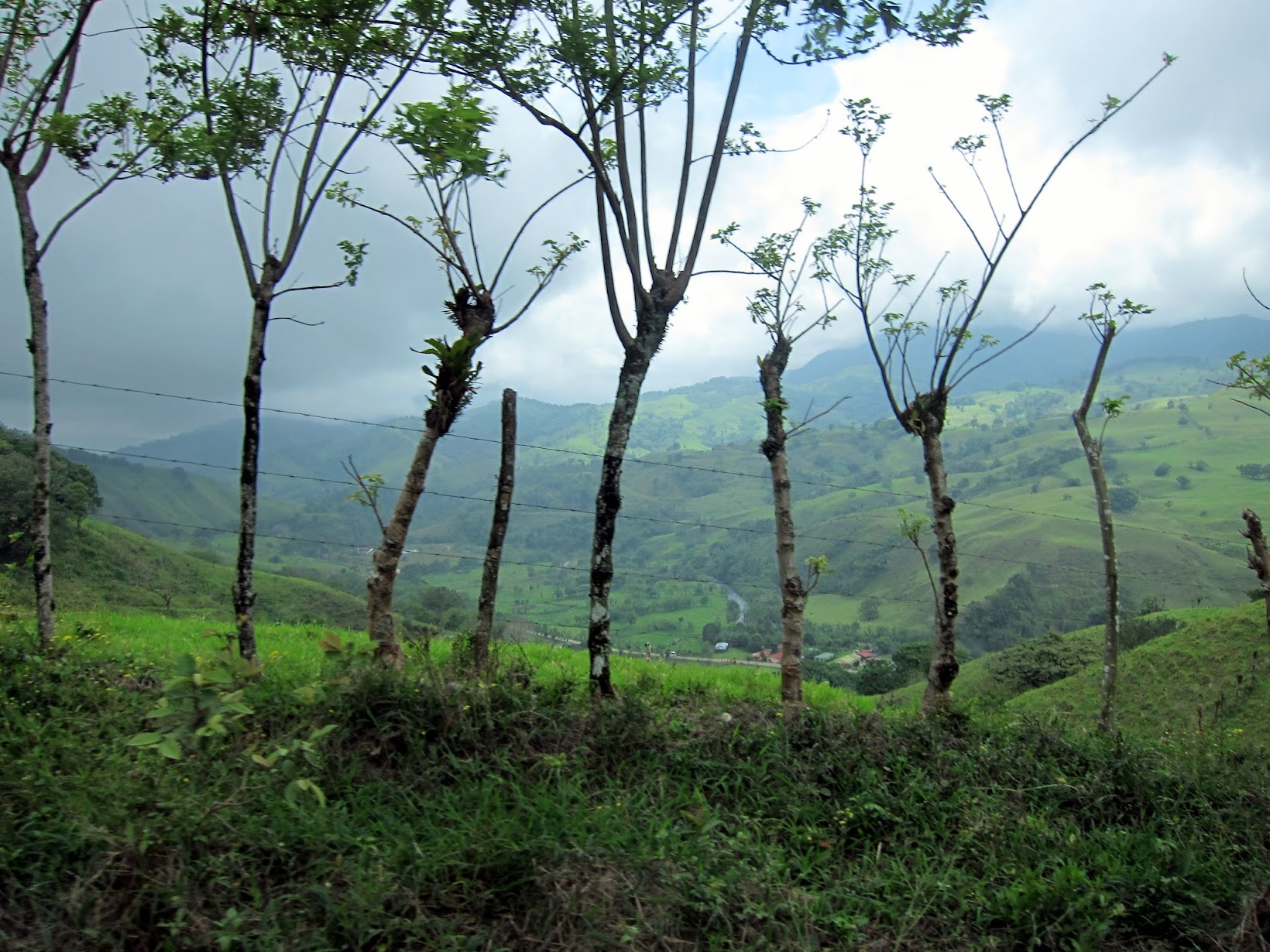After an action-packed first week in Costa Rica, we have been spending our second week hopping from beach to beach. En route from our hotel to Playa Tamarindo, the heavens opened for the first time of the holiday and we were forced to seek refuge in one of the main restaurants that line the main drag of 'Tamagringo.' Luckily, we picked
Longboards BBQ, which does a fine line in pulled pork sandwiches. Even more luckily, after we had eaten, the sun came out and produced one of the most spectacular sunsets of the holiday.
We spent the morning on Playa Tamarindo with about 10,000 would-be surfers. The surf was pretty strong, although with hindsight I didn't know how good I had it there, being able to bob up and down without being sucked into the current.
After a quick bite to eat, and in my case, some Italian conversation with the owner, at Buon Appetito, we went in search of prettier beaches. Playa Conchal, a few miles north of Tamarindo, certainly fit the bill: it's beautiful, has soft sand and relatively gentle waves—for the Pacific, anyway—plus, you have to drive across another beach, Brasilito, to get it to it. We spent a few hours in our own portion of paradise, before heading on to check out the competition.
After checking out the posh yachts and smart real estate in Playa Flamingo, which reminded me a lot of Cannes, we made it back to Playa Brasilito as the music stopped and the sun started to set. It wasn't quite as good as the previous one, but sipping an ice cool juice smoothie in a beach café was pretty cool.
Then it was time for our epic road trip from Tamarindo to Mal País, a tiny village and area in the southern tip of the Nicoya peninsula, known for its beaches and particularly its surfing. The distances involved are tiny, but we lost the paved highway soon after our first pit stop at Playa Samara and Playa Carrillo, and the rest of the journey involved over two hours of slow, winding dirt roads, which led us over hills, round tight bends and, eventually, through three rivers.
We knew that river crossings might be a possibility but were hoping that the fact that it is the very end of the dry season might mean we would escape. Alas. Luckily, our 4WD did the trick, although I still waded across each river first to check its depth and terrain. It was more than a little nerve-wracking but we made it in the end, in time for a much-needed swim in our hotel pool.
As all we had consumed at this point was a cappuccino at an
American-run B and B and coffee house on the road from nowhere to nowhere (pictured above), we then hurried into town for some food, which we found in the form of burgers at Burger Rancho, near the beach. I had ordered my burger "à point" from the French waiter, but it came medium-well; it was still tasty and we managed our first pudding of the trip: a very good brownie.
Today was another beach day. The beach at Santa Teresa (part of the Mal País collective) is beautiful but not very good for swimming: even when I stood in knee-deep water, the waves were pounding in so vigorously that I couldn't even stay on my feet. Round the corner at Playa Hermosa, the current is less strong, although at high-tide, you have to be really careful not to hurt yourself on the submerged outcrops of rock, which form tide pools at low tide. Hermosa indeed, but tough for the boardless.





















































